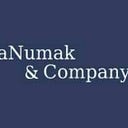How Luxury Brands are Changing Post Pandemic
The definition of luxury is simple; it is the state of great elegance at a great price. At the top markets, shoppers always intended to buy luxury brands from their original countries. This was the first factor that destroyed luxury brands during coronavirus. They depended on global travelers; outside shoppers generated 30% of the revenues. With airports closed, the luxury sector turned to local shoppers only. Additionally, fashion shows and weeks have stopped due to covid-19 or played without a live audience. The luxury sector needed a push post-pandemic, and it needed it fast.
E-Commerce or Not?
Erwan Rambourg, Managing Director at HSBC, believes that e-commerce is not the real future of luxury brands. However, he still argues that physical shops are an essential part of the luxury sector. Therefore, he writes that we should “prioritize brick and mortar and physical interaction over online sales.”
On the other hand, luxury brands have been expanding through the pandemic. It may reach $51 billion by 2023, and that is due to e-commerce. The main targeted customers are millennials and Gen Z. In addition to selling, there is resale offered by ThredUp or RealReal, online retail sites where you can buy and sell. According to ThredUp, the resale business has grown 21 times over the last two years, rather than buying new clothing. This has led authentic brands to create marketing arrangements with them, such as Gucci and Burberry.
Consider also the VR tours of the stores by a virtual shopper and streaming fashion shows that were once only for VIPS.
From B2B To D2C
With e-commerce, new opportunities are created to engage with a new audience. Many luxury brands were used to deal with business to business, selling to the stores and not to the customers directly. During coronavirus, B2B was dropped, and a new acronym was formed. D2C, direct to the customer, means that the brands are selling directly to the customer, not needing the shops. D2C generates a lot of customer data that can be useful for getting the brands into “the next level.”
If luxury brands were able to translate their work into D2C, they would attract more customers. The resource for customers in their 30s and 40s is not money; it is time. With D2C, they will be able to save time traveling to a shop. This means targeting and attracting a larger audience and customers. Some brands are taking this highway, like Balenciaga who is targeting the young audience.
Marketers speaking
Ada Luo, head of APAC digital, Croud
“The key audience for luxury products is changing, and as a result, the channels and ways in which brands communicate with and inspire this audience are also shifting. In a post-pandemic world, cinema and print will eventually bounce back, but the luxury industry is likely to wave goodbye to those mediums and continue to innovate and engage with new technologies to influence the next generation of customers.
The adoption of new technology and channels by various brands in the last 18 months has already given the industry a taste of this approach – Balenciaga’s move to release its fall 2021 collection in the form of an online video game has taken brand awareness to a new high and allowed the brand to tap into a wider audience. Similarly, the collaboration between Net-a-Porter and the Animal Crossing game shows the huge commercial potential of in-game purchases, while AR try-on is gaining popularity for luxury watches and clothing on Snap, and TikTok influencers stole the limelight at New York Fashion Week. Luxury advertising is already entering a new era.
Customers are adapting to the journey of purchasing luxury products online, and this is particularly apparent in China, where personal luxury sales are set to outgrow any other region in the world. Tmall Luxury Pavilion, the luxury e-commerce marketplace that is part of the Alibaba Group, saw a whopping 159% year-on-year increase in luxury sales in Q1 2021, even when offline activities had returned to normal in mainland China.”
Daniel Swepson, head of inbound marketing at Woven
“No idea if you heard, but 2020 was a tough year. And, with a 23% decline globally, the personal luxury goods market took a palpable hit – but there’s some bright light on the horizon.
In that same year, the number of high-net-worth individuals (HNWIs) grew by 2.5% globally, and by 12% in Asia, so the market isn’t just still there, it’s expanding. And while they’re not spending as much on the same products and services as they were pre-pandemic, they’re putting increasing value on investment pieces and experiences. This is a big opportunity if brands choose to take it.”
Source: https://www.thedrum.com/news/2021/09/15/the-future-luxury-marketing-according-marketers
The luxury brand is expanding and changing post-pandemic. It is taking new shapes, with new competitors at the stake. It creates new threats and new challenges, but the luxury brands had found a way to survive.
Read more articles at https://anumak.com/
